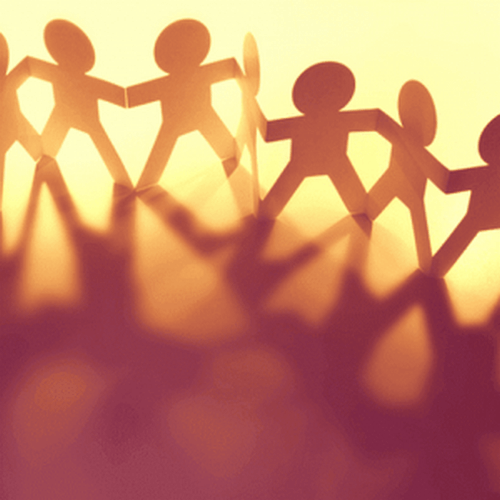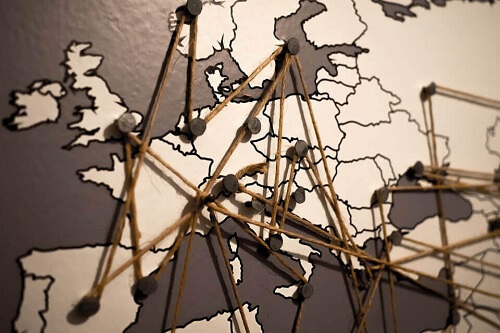Are you familiar with the functions of social work in emergency and disaster situations?

Written by Elena García
Last update: December 14, 2021
When an event poses a risk, whether it be for a community or a large number of people, it is necessary to involve specialized professionals. Social work in emergency situations and disasters aims to fully resolve the contexts of crisis and risk, putting in place a real social intervention.
The intervention must be prepared before the emergence of the emergency situation through a well-defined protocol, and must continue throughout the crisis period. Before starting to talk about the role of social work professionals in this kind of situation, it is necessary to specify the meaning of some terms that we will use.
- Emergency. The first word used to refer to a state of emergency was perhaps CQD, from the English As Quickly, Distress, or “come quickly, we are in danger”. According to the WHO, an emergency means a case in which "the lack of assistance would cause death in a few minutes".
- Catastrophe it derives etymologically from the ancient Greek: katastrefein (to tear down, to destroy). According to the WHO, it consists of "any phenomenon that causes damage, economic damage, loss of life and degradation of health and health services to an extent that requires an extraordinary response from sectors outside the affected community or area".
- Disaster comes from the Latin des (negative, unlucky) and astre (star, star). It would therefore indicate a misfortune derived from the stars or the gods, and which goes beyond human control. According to the WHO, these are unforeseen situations that pose a serious and immediate threat to public health. As well as any public health situation that puts the life or health of a significant amount of people at risk and requires immediate action.
Aptekar (2014), based on quantitative data, differentiates the three terms as follows: accident or emergency it applies to situations in which fewer than a thousand people die; disaster when the number of victims of imminent danger of death is calculated between one thousand and one million; in the end, catastrophe when the number of deaths exceeds one million.
What do these terms have in common?
Fouce, Hernández-Coronado, Nevado, Martínez, Losada and Lillo (1998) explain the common aspect of all these terms:
- They require intervention in the face of a request that does not allow for delays due to the imminence of the situation.
- Depending on the magnitude of the event and the repercussions on the subject, they arise similar psychological reactions depending on the consequences.
- They are often unpredictable and accidental and therefore cause surprise, vulnerability and destabilization.
- They can constitute an immediate danger to life or physical integrity.
"The world breaks everyone and then many are strong right at the broken points."
-Ernest Hemingway-
The role of social work professionals in disasters
In the first place, it is necessary to take into account how the intervention of social work must be present from the beginning. This means that participation arises from prevention and from the elaboration of protocols, up to the moment in which the action of professionals is necessary. We must not forget that continuous and team work will bring an ever greater benefit to the community.
As the consequences of these situations are unpredictable and sometimes devastating, multidisciplinary intervention will be required. Any problem will get smaller if you attack it from different fronts.
As regards strictly the role of the social work professional, he / she will have to adopt an accompaniment and support technique. However, it is also important to dynamize the action so that the community itself adopts a leading role and actively participate in reconstruction (Peñate, 2009).
For this purpose, some of the functions of social workers will be the following (Herrero, 2012):
- Inform, advise and raise awareness of institutions.
- Provide the necessary information and organize the population preparing them for the impact of possible disasters.
- To form a team of professionals and volunteers.
- Welcoming and accompanying the people involved directly and indirectly.
- Maintain constant communication with family members (information on the injured and fallen, accompanying the recognition of victims ...).
- Administration of resources and services.
- Damage inventory to organize the request for help.
- Crisis therapy, social reporting ...
- Sensitization towards community participation, training of self-help groups ...
Goals of social work
According to Herrero (2012), some of the objectives linked to the action of social work experts in the case of catastrophes, emergencies and disasters are:
- To make known the possibilities available to social groups.
- Motivate and encourage access to these opportunities.
- Support people involved in managing feelings and emotions.
- Helping people to learn new ways to cope with problems, conceiving life differently.
- Restore the psychological balance of the victims.
- Integrate the accident into the structure of life.
- Establish or facilitate communication between people in crisis.
- Help the individual or family to perceive the situation correctly.
- Restore the homeostasis of the individual in the surrounding environment. In other words, helping people adapt to their new situation.
Lastly, the role of social workers, even if it is sometimes forgotten, is essential above all to help people who have seen their lives turned upside down by catastrophes or emergency situations. In these cases, as we have seen, the synchronized work of different professionals certainly becomes very important.


























